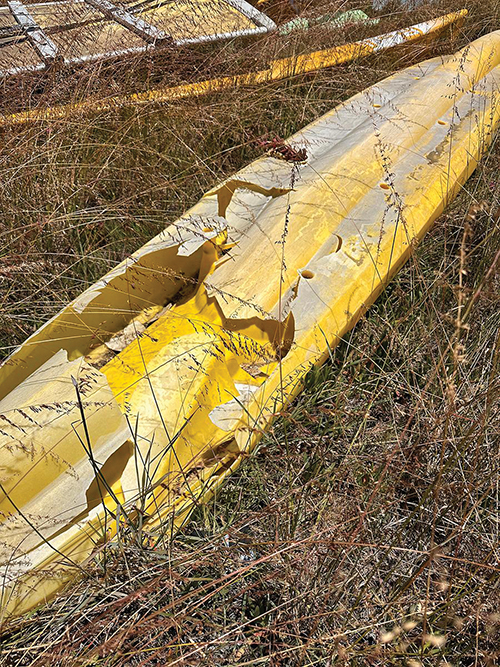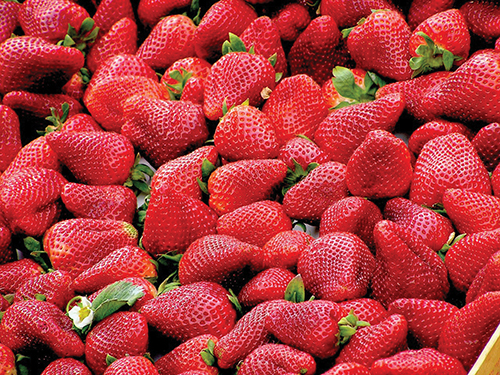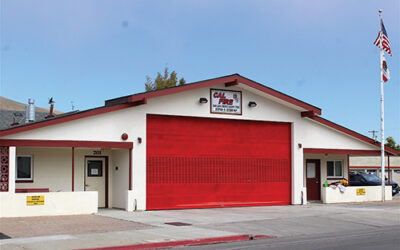Cuesta Inlet Boat Creep Check July 15

Photo submitted
Abandoned watercraft at a Los Osos treasure have doubled since the pandemic.
Cuesta Inlet is a wonderful local resource for walking and active boat/kayak/SUP enthusiasts. On July 15, boats will be inspected and noticed if they are out of compliance. Celebrate Los Osos volunteers will inspect each boat at the inlet starting at 9 a.m. Readers that want to volunteer for the Cuesta Inlet cleanup can contact Ellie Malykont at: Volunteer@CelebrateLosOsos.org
“The property is private, and the owners require only two things of folks keeping boats at the inlet: you must have current registration and contact information,” said Pandora Nash-Karner of Celebrate Los Osos. “For the gift of easy access to the bay, it’s not too much to ask.”
For 27 years volunteers have attempted numerous efforts to control “boat creep,” the number of kayaks, canoes, skiffs and small sailboats at Cuesta Inlet, many just dumped and abandoned. For the past fourteen years, volunteers from Celebrate Los Osos have worked with the property owners, county code enforcement, Supervisor Bruce Gibson, the sheriff’s department and their dive team, and the California Highway Patrol to clean up the inlet area. They have removed over a ton of litter, refloated sunken boats, attempted to find owners, and towed away orphan boats. Boats have increased from 286 in 2010 to now nearly 700!
“Health and disease problems caused by abandoned boats can be serious. Water-filled boats are perfect mosquito breeding grounds,” Nash-Karner said. “Mosquitoes won’t travel more than 100 feet or so from standing water. That’s because the female mosquito (they do the biting) needs water to deposit her eggs. The only reason a female mosquito bites is to get the proteins necessary to form her eggs. So, after she’s gone to town on your blood, you can guess what her next stop is! All she needs is about an inch of water to lay the eggs that will become a whole new swarm taking over a kayak, canoe or sailboat at Cuesta Inlet.”
Mosquitos aren’t the only pest running amuck. Rats are now living and breeding under some of the upside-down abandoned canoes and kayaks, especially those with ice plant growing over them, making those vessels perfect hiding places to shelter the rodents.
On July 15, volunteers will inspect every boat at the inlet looking for the two things that would allow the boats to be compliant: a) boat registration if applicable, and b) contact information.
All vessels must be registered except boats that are manually propelled; sailboats 8 feet or shorter, boats from outside the state that are registered currently in their home states. Notices will be taped to all boats out of compliance and request that contact information be placed on the boat with something permanent, not so called “permanent Magic Marker” because they are not permanent.
“After all the years of public outreach about the two simple rules at Cuesta Inlet, it is disappointing to see so many people taking advantage of the storage and launching privilege and still flagrantly not complying with the owner’s requests,” stated Will “George” Kastner, Celebrate Los Osos board member.
The group Save Cuesta Inlet is raising money to purchase the land so that it can be permanently held as public property. To learn more, go to https://savecuestainlet.org/sci/
Poly to Research Strawberry Farming Automation

Automation in the Strawberry industry could increase the sustainability one of the State’s biggest agriculture crops.
The Cal Poly Strawberry Center, in collaboration with the California Strawberry Commission and the U.S. Department of Agriculture Agricultural Research Service in Salinas was awarded $1 million in federal funding to expand its research in strawberry automation leading to enhanced sustainable farming practices, including workforce development.
The program will bring together stakeholders to focus on development and deployment of innovative automation and mechanization technologies related to planting, pruning, pest management, picking and processing in the strawberry industry.
In 2021, California produced 90% of all strawberries grown in the U.S. Strawberries are California’s highest-value per-acre crop, generating $3.1 billion in direct impacts and an additional $2.1 billion in indirect impacts. In all, California strawberry farmers contribute a total of $5.2 billion to the economy.
The Census Bureau projects that the U.S. population will reach 438 million by 2050, increasing the demand for sustainably grown foods. At the Cal Poly Strawberry Center, the first year of this multi-year project will be focused on developing high-tech machinery to autonomously cut runners off strawberry plants. Subsequent years’ work will include focused technological advances on the removal of weeds and unhealthy plant material in commercial, open-field production. This increases harvest yield and provides a non-chemical approach to decreasing concomitant pests and disease vectors.
Over the last five years, the Strawberry Center has successfully developed and commercialized several types of enhanced strawberry production equipment such as the Lygus bug vacuum, spray rig, strawberry decapper, plastic hole puncher and hoop house disassembler.
The funding, awarded through the “Consolidated Appropriations Act, 2023” bill, was championed by members of the California delegation in the House and Senate and will be reoccurring in future years.
Parking Fees Jump in SLO
It will cost a bit more to work and play in the City of San Luis Obispo if you have a car to park. Starting on July 1, parking rates will increase to pave the way for community-building projects and support the long-term vibrancy of downtown San Luis Obispo.
The two-hour street parking in the main downtown core will go up to $4 per hour from about $2. The 10-hour street parking in the outer downtown area will go up to $3 per hour from $1.50. Structure parking will be $3 per hour or a maximum daily rate of $12.
The City’s Parking Services Program provides on-street and off-street public parking facilities including: five public parking lots downtown, three parking structures, 11 residential parking permit districts, 55 multi-space pay stations, and over 700 single space parking meters.
Residents of San Luis Obispo County can keep their first hour of free parking at the 842 Palm St. structure starting when new rates go into effect. Registration for the Park Local program is available at slo.thepermitportal.com.
Send your news, community and business briefs to Editor@EsteroBayNews.com. Be sure to include the who, what, why, where and when information along with a contact person.


